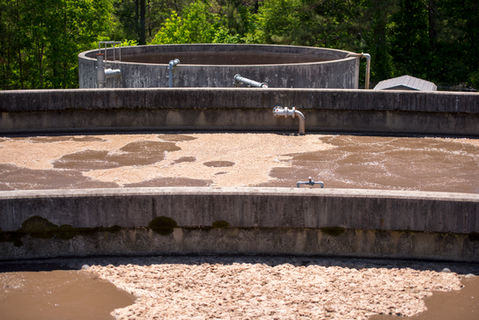
Sewer
ECU owns and operates 3 waste water treatment plants with a total treatment capacity of 4.9 MGD. ECU has 212 miles of sewer line serving 12,200 retail sewer customers. ECU also utilizes 26 pump stations to transferred sewer to the waste treatment plants.
ECU owns and operates 3 wastewater treatment plants and owns treatment capacity in a ReWa owned plant, totaling 5.4 MGD of sewer treatment capacity. ECU has 212 miles of sewer line serving 12,200 retail sewer customers. ECU also utilizes 26 pump stations to transferred sewer to the waste treatment plants.

Fats, Oils, & Grease
Did you know that cooking grease coats pipes similar to the way that fatty foods clog human arteries? Grease as a warm liquid may look harmless. However, as it cools it solidifies and clings to the inside of the pipes and can cause a complete blockage in the sewer line.
Residential Pipes clog easier since they are only 2” to 4” in diameter and can cost hundreds of dollars in repair bills because of sewer backups. Think pouring hot water and detergent down the drain after the grease is okay? Think again. This only breaks the grease up temporarily. Disposing of grease down your kitchen sink or flushing it down the toilet can cause messy sewer backups in your home or business and can lead to problems for wastewater treatment plants.
To Flush or Not to Flush
Is it flushable? For sewer systems and wastewater treatment plants, flushing anything other than toilet paper and human waste can wreak havoc on a system. Despite their claim to be flushable, items such as facial tissue, baby wipes, and disposable toilet brushes do not disintegrate at the same rate as toilet paper.
Sewer pipes at your home are generally no larger than 4 inches and designed to carry water, human waste and toilet paper. Flushing items other than this creates blockages, clogs pipes and drains and can lead to sewer backups in the home and city streets as well as creates unnecessary problems for wastewater treatment facilities.
Below is a list of items that should be put in the trash can, NOT down the toilet:
Facial Tissue
Baby Wipes or Flushable Wipes
Rags
Paper Towels & Napkins
Dryer Sheets
Disposable Toilet Brushes
Cotton Balls
Q-Tips
Dental Floss
Feminine Products
Cat Litter
Food & Grease
Medications
U.S. Food and Drug Administration Guidelines for disposing of unwanted medications.
Wastewater Collection Permitting Process
The Delegated Review Program (DRP) was created to help streamline the permitting process for wastewater collection systems while also ensuring that the material, equipment, and sewer design conform to standards that are established by the POTW. This is done by allowing the POTW to complete the technical review of project using their SCDHEC approved specifications and design criteria. Once the POTW completes its technical review, the project is submitted to SCDHEC by the local entity with certification that the project meets the design standards and criteria of the approved local program.
Once the plans are received by SCDHEC, only an administrative review is completed to ensure that there is available capacity at the receiving wastewater treatment facility. Wastewater collection projects submitted under this program can generally be permitted by SCDHEC within a few days of their receipt by the POTW.









